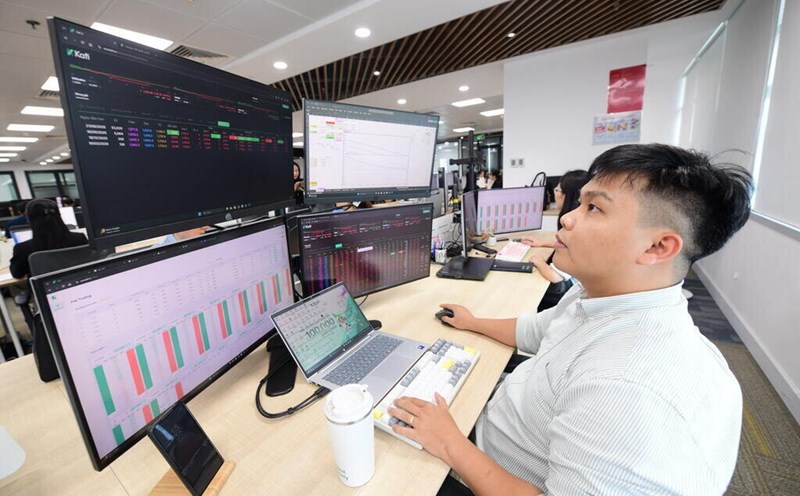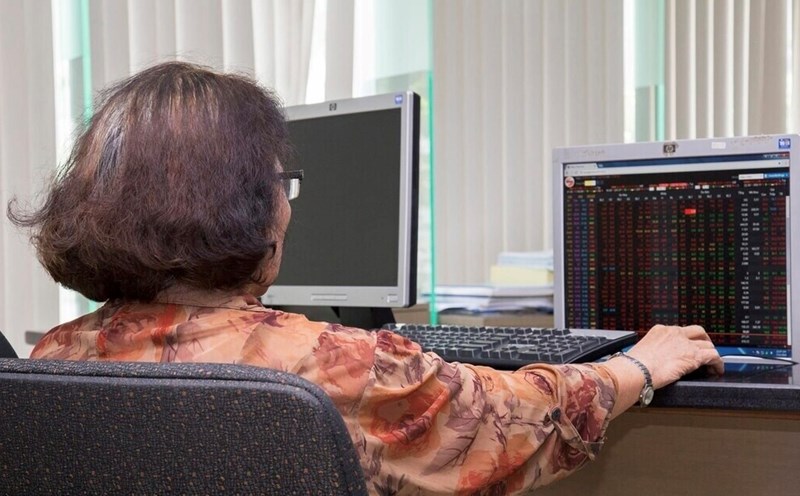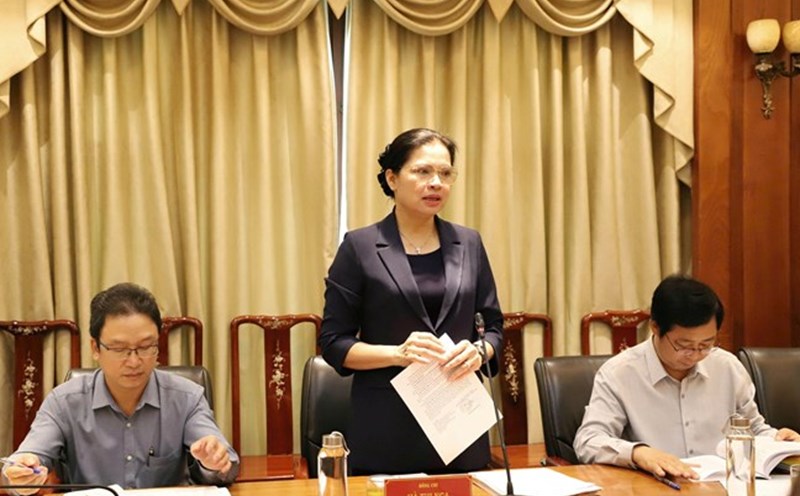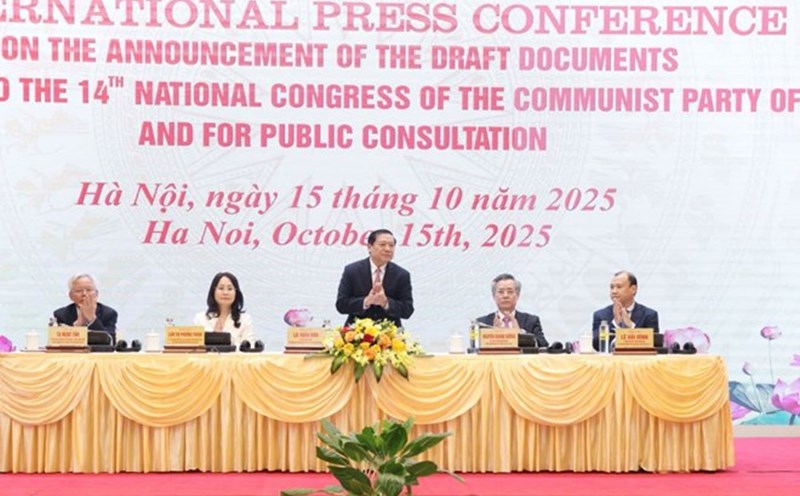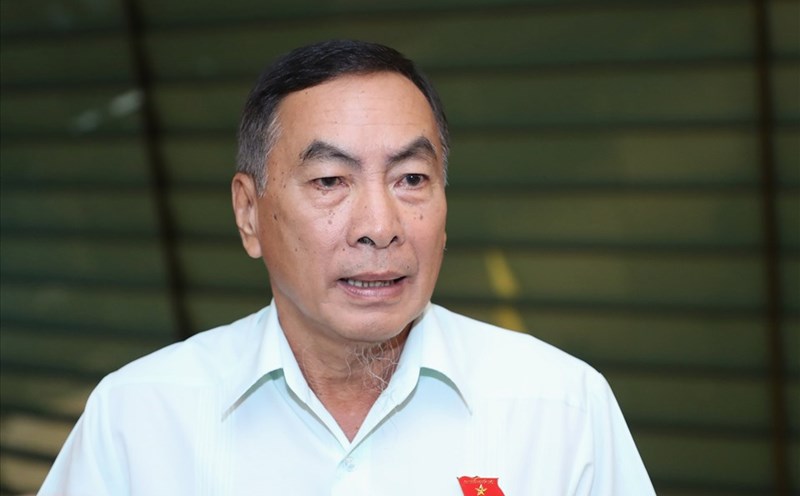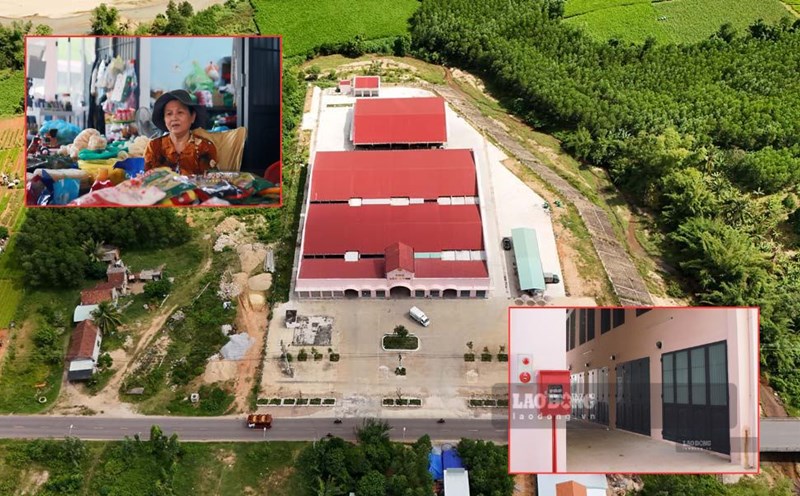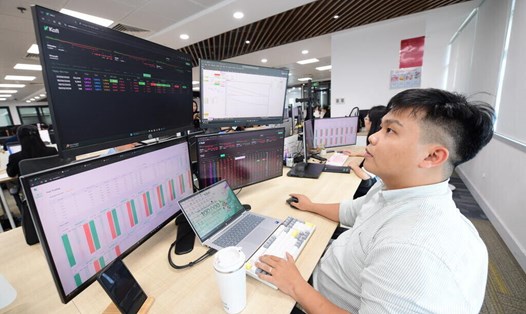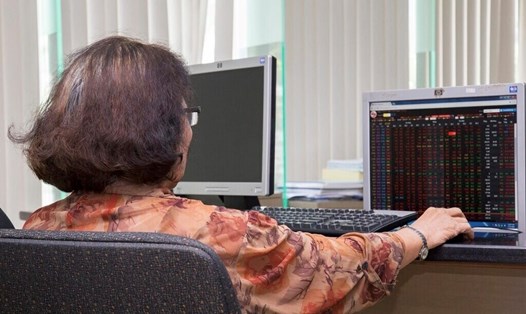In today's trading session on October 21, after a few minutes of decreasing points according to the consistency of the previous session, bottom-fishing demand entered the game and helped the VN-Index reverse to increase points and increase quite strongly. Foreign investors also reversed to net buy more than VND 2,300 billion on the HoSE.
The reversal of foreign investors has partly relieved negative sentiment for investors. Instead of racing to sell off in the morning session, domestic investors increased their purchases in the second half of the afternoon session. This move helped the market gradually regain its green color, even increasing by 27 points (equivalent to 1.65%) at the time of closing, to 1,663 points.
Liquidity in today's session, although decreased compared to the previous session, still stood at a high level with 1.56 billion shares, equivalent to VND 47,152 billion.
The HoSE electricity board was filled with green with 213 codes increasing compared to 133 codes decreasing and 31 codes moving sideways. Similarly, the VN30 electricity board recorded 26/30 codes of increase and 4 codes of decrease: MSN, GAS, TCB, VCB.
The top of today's session is still the familiar "dozen" VIC and VHM contributing 12.7 points and 4.5 points respectively. Next are bank codes such as HDB, CTG, VPB, LPB, CTG, BID, SSB.
Novaland's NVL shares continue to suffer the consequences of the backlog after the information was transferred to the investigation agency about violations in the use of bond capital. In today's trading session, NVL shares were pushed back to the floor price at 14,400 VND/share with more than 26 million outstanding shares.
Meanwhile, FPT shares suddenly became the center of attention when they increased the "white ceiling on the selling side" to 93,000 VND/share. This is the first time this stock has increased the ceiling since the bottom of the tariffs in mid-April.
The "over-the-top" increase brings the expectation of "rebirth" for Mr. Truong Gia Binh's stock after a series of long days of bottom-fishing. Previously, FPT had decreased by 35% from the peak, thereby falling to 87,000 VND/share, the lowest level in 18 months. Along with that is unprecedented strong selling pressure from foreign investors.
Since the beginning of the year until before the session on October 21, foreign investors have net sold more than VND17,000 billion on Vietnam's No. 1 technology stock. This has caused FPT to open the room to more than 217 million shares (about 13% of total outstanding shares) - a situation that rarely happened before. However, the positive signal has returned after the last session when foreign investors unexpectedly net bought nearly 6 million FPT shares.
Returning to the market, the VN-Index is now in the accumulation zone of 1,630 - 1,695, fluctuating from the end of August 2025, in the context of the market waiting for information to upgrade. This is considered a short-term support zone, opening up opportunities for investors to restructure their portfolios during recovery periods. For investors who have not participated in the recent growth period, this is the right time to consider entering the market, prioritizing stocks with reasonable valuations and positive business prospects.
According to experts, in the current correction, investors should focus on two notable groups of stocks.
The first is the group of enterprises with positive business results in the third quarter, including securities, construction materials, fertilizers, etc. When positive numbers in the financial report appear, these will be the first codes to receive cash flow attention after the market's correction.
Second is the group that benefits directly from macro policies, including construction, construction materials, real estate and banking. With the goal of high economic growth, the Government is likely to promote support policies such as expanding credit (positive impact on the banking group), promoting public investment (supporting construction groups and construction materials), or loosening regulations on land management (creating motivation for the real estate group).
Experts believe that the prospects of this group are not only positive in the short term but can also last until 2026, when these policies gradually become practical and effective.

